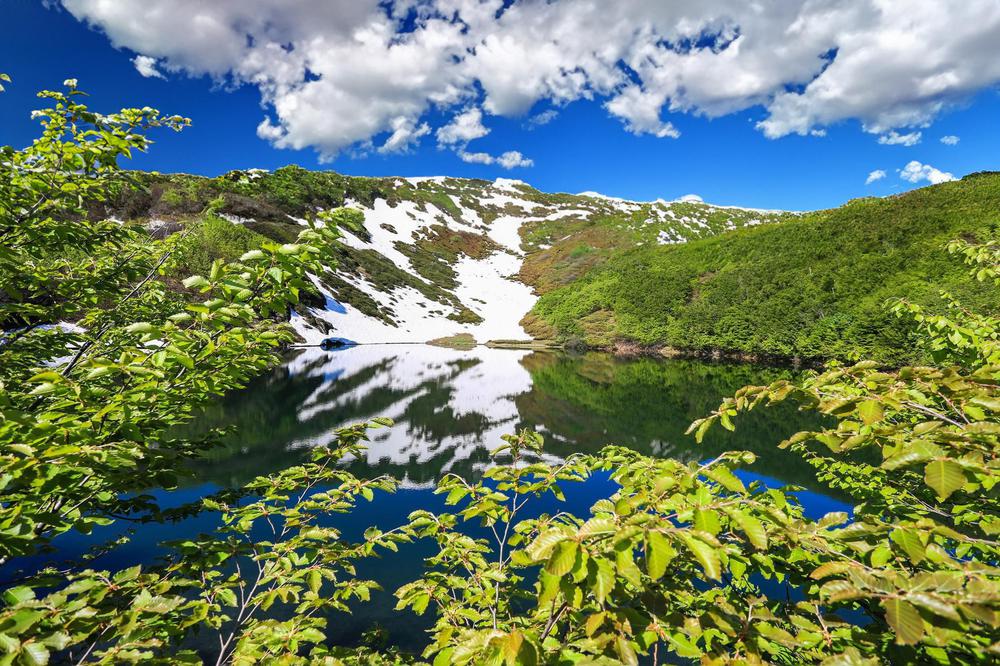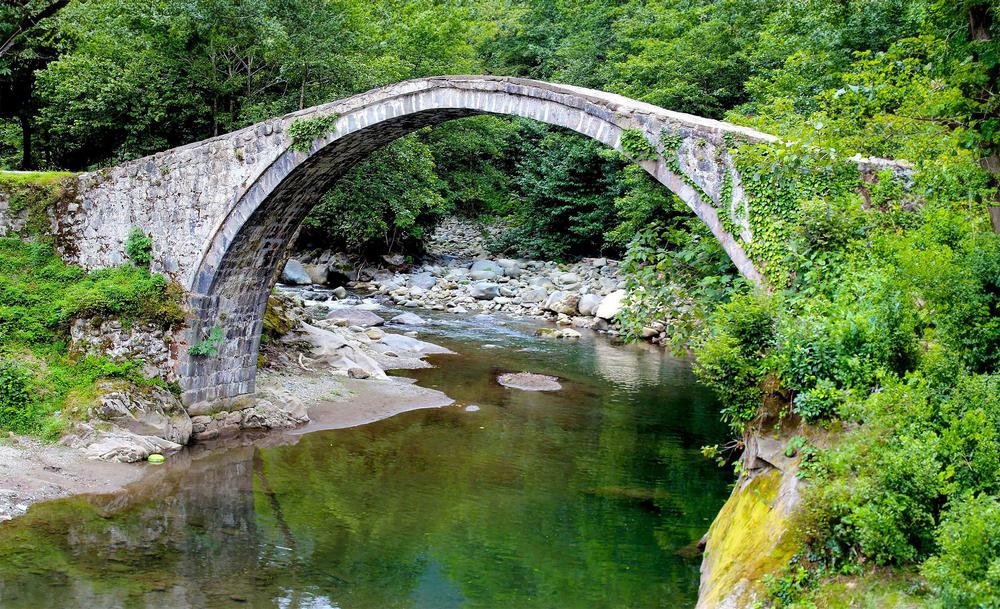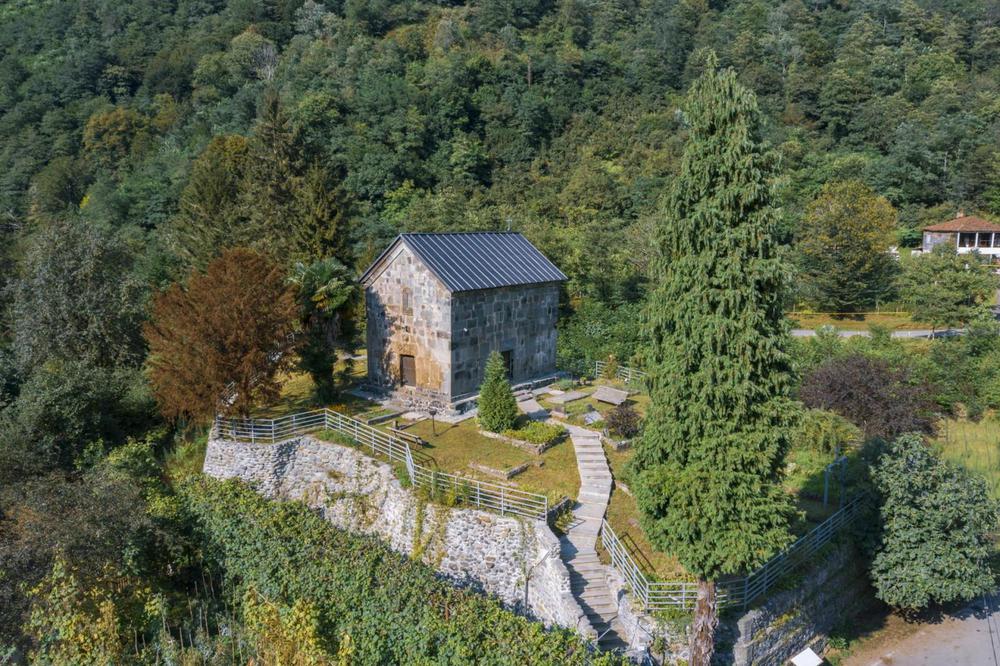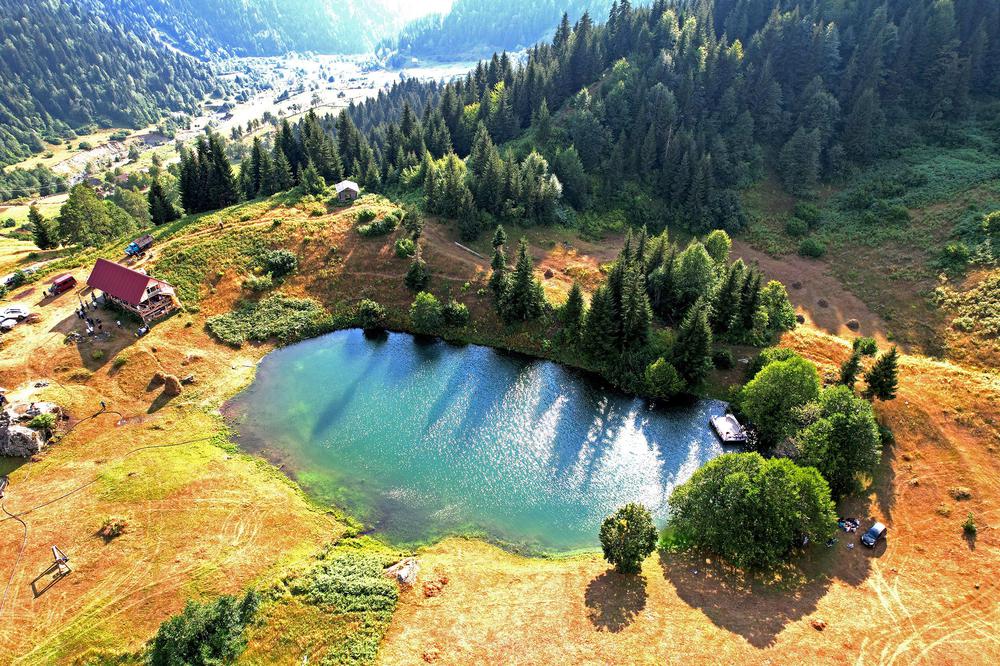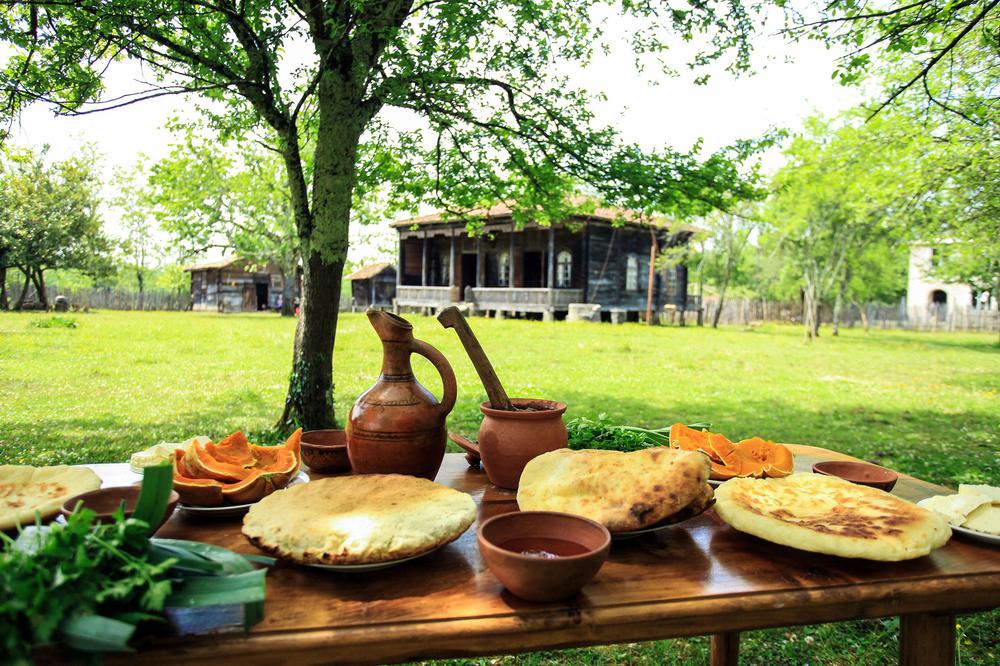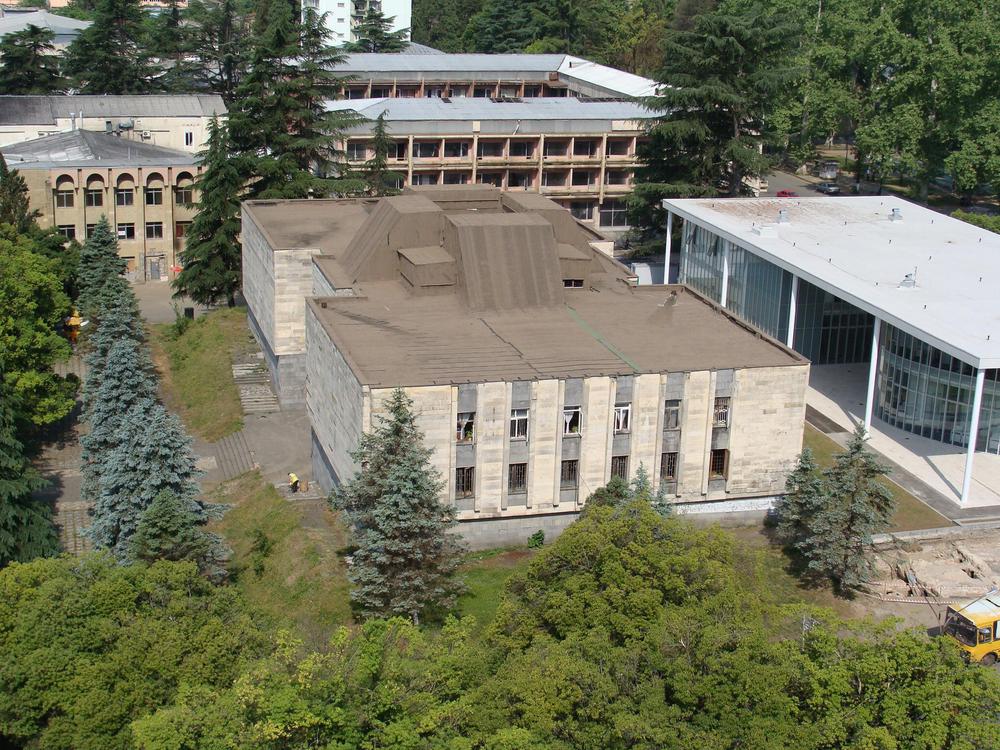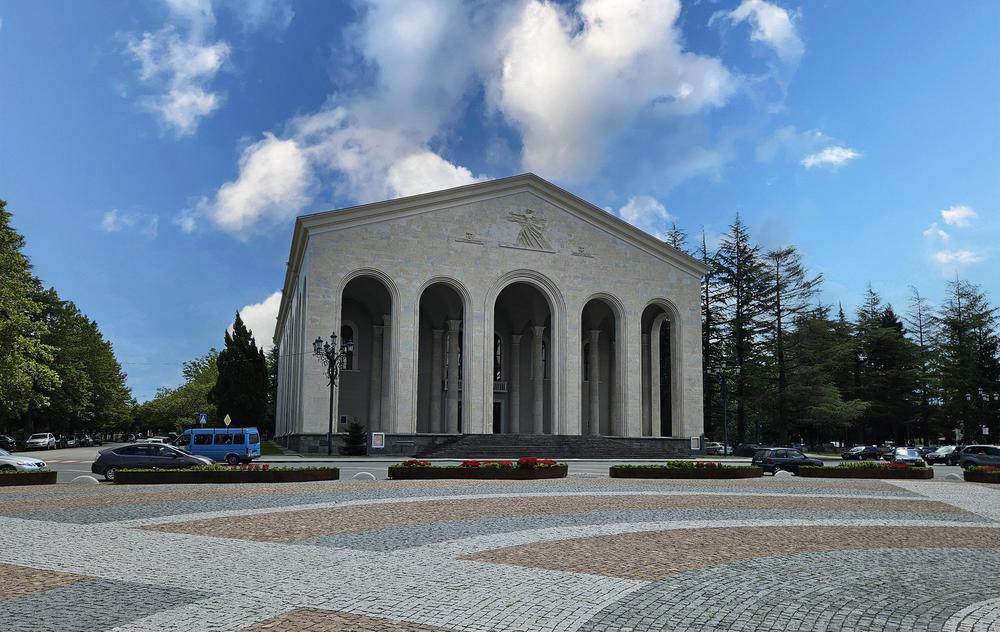Situated in the lush terrains of Adjara within the boundaries of Kintrishi National Park, Tbikeli Lake captures attention, not just for its unique heart shape, but also for its placement on the north-eastern slopes of Mount Nabadziri, elevated at 2222 meters (7290 feet). The lake, stretching to depths between 8 to 10 meters (26 to 33 feet), sustains itself through a blend of snowmelt, groundwater, and atmospheric precipitation, a natural symphony ensuring its perennial existence. Winter transforms the lake into a crystalline spectacle, as it succumbs to a cover of snow and ice.
Diving into its biological ensemble, the lake is a sanctuary for the Caucasian Triton, a species finding its name in the Red List, indicative of its endangered status. The lake's peculiar shape has transcended its geographical identity, becoming a symbol shared in photographs—a digital ‘heart’ sent across social media platforms, a testament to its unique charm and the affection it garners from those who’ve encountered its beauty.
The journey to Tbikeli Lake is an adventure in itself; whether one opts for a horseback ride or decides to tread the 14-kilometer (8.7 miles) trail starting from Khinotsminda, the destination rewards with more than just scenic views. It also comes wrapped in local lore, stories woven into the fabric of the landscape. Tales speak of a strange creature, once a menace to grazing calves, its presence marking daily turmoil until a vigilant shepherd devised a plan. By arming the calves with sharp objects upon their horns, the creature’s reign ended, never to return. Yet, the fear lingered, leading locals to attempt draining the lake. Rain thwarted their efforts repeatedly, interpreted as divine intervention, prompting an eventual cessation of their plans.
Today, the lake stands, undrained and serene, its heart shape a magnet for photographers and nature enthusiasts alike, its waters harboring not monsters of folklore, but the petite, harmless yet endangered Caucasian newt.

